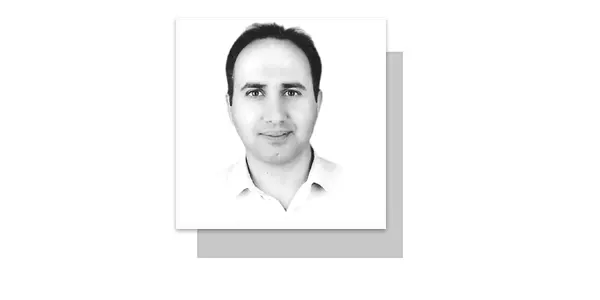PAKISTAN is a developing country and most of its population lives in undesirable circumstances. A large number of people in our country do not have proper places to live, this miserable condition has given birth to a large number of beggars and dependence of people to survive on the charities. The economic conditions of an average individual are not encouraging. Poverty, hunger and unemployment have afflicted a large section of population.
Budget debates on development come and go, but poverty remains despite the rhetoric of economic objectives being to reduce poverty. The emphasis on large investments on economic infrastructure and the limited expenditure on education and health in the budget are reasons for this scepticism. Overall economic growth no doubt reduces poverty, yet the trickle-down effect could be inadequate. A study on poverty has brought Pakistan face to face with a reality which says every third Pakistani is caught in the ‘poor bracket’ which is 75 million out of a total population of 245 million subsist below the poverty line. Lower per capita incomes make it extremely difficult for the poor to save and invest, a condition that perpetuates low productivity and low incomes. Furthermore, rapid population growth also quickly absorbs increase in per capita real income and thereby negates the possibility of breaking out of the underdevelopment circle. This burden of poverty is put heavily on the female population which is 49% of the total population of Pakistan, most of whom are neglected and under-nourished.
In the past few years, it has been experienced that income earning opportunities are few and far between for the poor women of both rural and urban areas. A few of them have learnt vocational skills and often seek additional income by making and selling local handicrafts, but lack proper linkages to market these products. Employment opportunities are scarce and real earnings have declined in the last decade. Majority of our poor women also lack basic human, physical and productive assets and have limited or no access to essential social services. The severe economic pressure on families is also a constraint in improving their health and sending their children to school. Unless these women are not empowered through education and skill development, the country won’t be able to remove gender inequality.
In the World Bank Policy Research Report, it is unambiguously suggested that women empowerment is being progressively recognized as an important policy goal for improving not just the well-being of women themselves but also for its positive impact on the family. Due to recent concern and emphasis on removing gender inequality and improving women empowerment as a Sustainable Developmental Goal, many efforts have been initiated by the Government and other organizations in Pakistan. According to UNDP’s Human Development Report, Gender Equality Measure (GEM) for South Asia shows the lowest value (0.235) among all the regions of the world. Furthermore, as per Gender Development Index (GDI), Pakistan has been noted the poorest (0.179) among South Asian countries where the average index is 0.226 (MHHDC, 2005). According to UNDP report for 2021, the HDI for Pakistan is 0.551, which ranks Pakistan on 150th out of 189 countries.
Women are the largest untapped reservoir of talent in the world. How can we bring them into the mainstream, and empower the poor women of Pakistan in particular? This question is asked in different ways, sometimes focusing on making adjustments to existing systems, sometimes by considering whether to introduce particular programs or policies. Women’s empowerment is heavily dependent on many different variables that include geographical location, educational status, social status and age. Policies on women’s empowerment exist at the national, provincial and local levels in many sectors, including health, education, economic opportunities, gender-based violence and political participation. However, there are significant gaps between policy advancements and actual practice at the community level. One key factor for the gap in implementation of laws and policies to address discrimination, economic disadvantages and violence against women at the community level is the largely patriarchal structure that governs the community and households in much of Pakistan. As such, women and girls have restricted mobility, access to education, access to health facilities and lower decision-making power and experience higher rates of violence. Gender is a socio-cultural variable affecting both genders and their status relative to each other. Gender equality refers to a stage in human development where individuals’ rights, responsibilities and opportunities are not determined by their gender, allowing both genders to reach their full potential.
It should be remembered that despite a 39% poverty rate, Pakistan’s social protection system is limited and poorly targeted, serving only 10-15% of the population. To address this, significant investment is needed to effectively reach impoverished women. Implementing a national targeting strategy and offering skill training and market research are vital steps toward economic rehabilitation. By focusing on modern skills and marketing opportunities, we can empower women in both rural and urban areas, enhancing their financial stability and contributing to Pakistan’s future development. Empowering women is the most effective tool for progress, as assisting them in realizing their potential can work wonders.
—The writer is PhD in Political Science and visiting faculty member at QAU Islamabad.
Email: [email protected]
views expressed are writer’s own.









